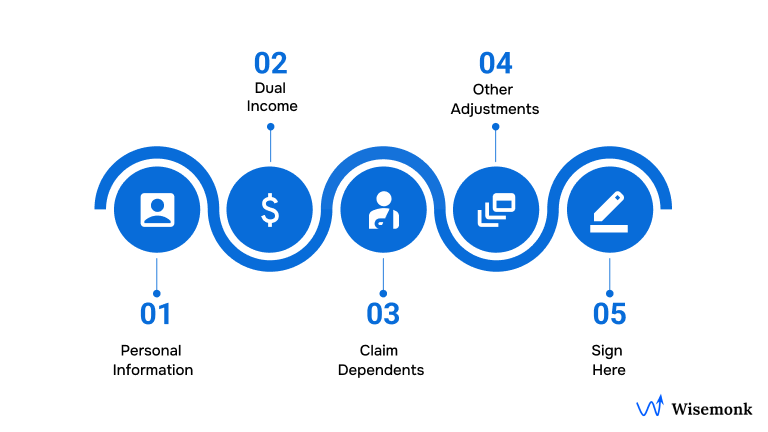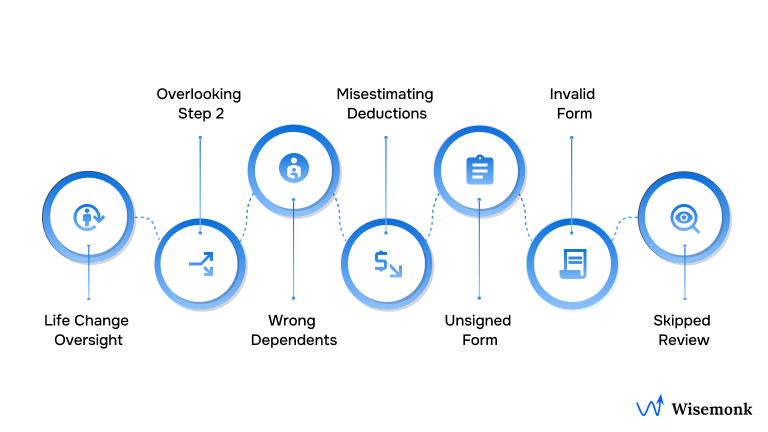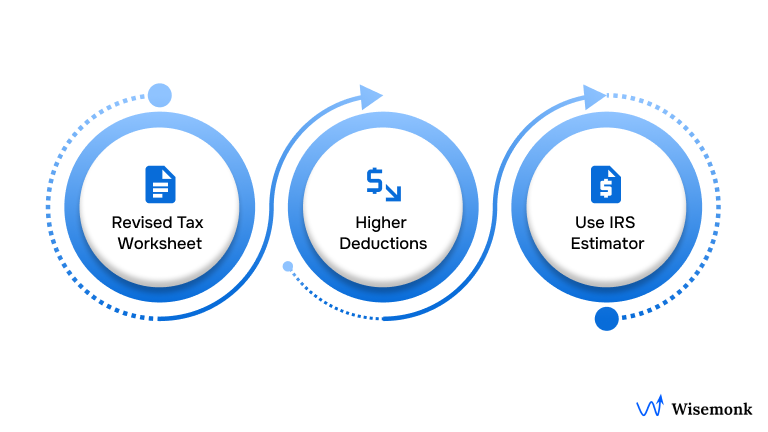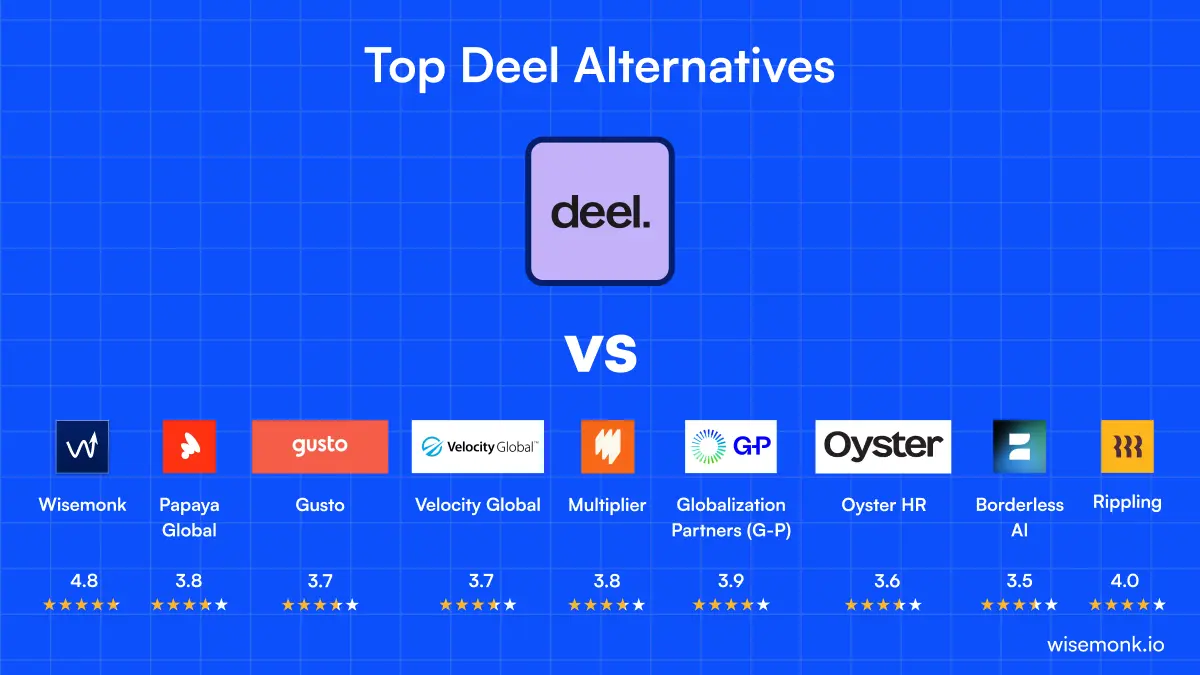- The W-4 form determines the amount of federal income tax withheld from an employee's paycheck.
- In 2025, minor updates were made, including revised tax tables and a recommendation to use the IRS Tax Withholding Estimator.
- Employees should review and update their W-4 form after life changes, like marriage or the birth of a child.
- Employers must ensure employees' W-4 forms are accurate to avoid over or underpayment of taxes.
- Regular updates to the W-4 help ensure accurate tax withholding and compliance with IRS regulations.
Did you know that the average U.S. tax refund in 2024 was $3,138? That's a sizable amount that many Americans rely on each year. But what if you could keep more of that money throughout the year instead of waiting for a refund? The key lies in accurately completing your W-4 form.
We understand how daunting and time-consuming managing tax forms and compliance can be for businesses expanding into new markets, especially when navigating unfamiliar regulations.
The W-4 form, officially known as the "Employee’s Withholding Certificate," is a crucial document that determines how much federal income tax is withheld from your paycheck. Filling it out correctly ensures that you neither overpay nor underpay your taxes, helping you avoid large tax bills or smaller-than-expected refunds.
As an employer, managing the W-4 form is just as important. It helps ensure your employees have the right amount of taxes withheld, keeping them happy and avoiding any issues with the IRS. Getting it right keeps payroll smooth and tax compliance on track.
What is the W-4 Form?
The W-4 form, also known as the Employee's Withholding Certificate, is used by employees to tell their employers how much federal income tax to withhold from their paychecks. It's a simple form, but getting it right is essential for both the employee and the employer.
The form asks for key information like your marital status, dependents, additional income, and other deductions. Based on the details you provide, your employer calculates the correct amount of federal taxes to withhold from each paycheck. The more accurately this is filled out, the better your chances are of avoiding a large tax bill or an unexpected refund at the end of the year.
Understanding this form and how to use it correctly is essential for both employers and employees. Let's break down the key sections of the W-4 form to help you navigate it more easily.
Key Sections of the W-4 Form

The W-4 form is divided into five steps, each serving a specific purpose to ensure accurate federal income tax withholding. Let's explore each step to understand its role:
Step 1: Personal Information
In this section, you'll provide essential details:
- Name and Address: Your full legal name and current address
- Social Security Number (SSN): To accurately match your earnings with your tax records.
- Filing Status: Choose your tax filing status- Single, Married Filing Separately, Married Filing Jointly, or Head of Household
This step is mandatory for all employees and sets the foundation for your withholding calculations.
Step 2: Multiple Jobs or Spouse Works
This step applies if:
- You hold more than one job simultaneously.
- You are married, and both you and your spouse work.
Accurate completion of this section ensures that your withholding reflects your total income, preventing under-withholding.
Step 3: Claim Dependents
If your total income is:
- $200,000 or less ($400,000 or less if married filing jointly),
You can claim dependents to reduce your withholding:
- Qualifying Children Under Age 17: Multiply the number of qualifying children by $2,000.
- Other Dependents: Multiply the number of other dependents by $500.irs.
Add the amounts for qualifying children and other dependents to determine your total.
Step 4: Other Adjustments (Optional)
This section allows for additional adjustments:
- 4(a) Other Income (not from jobs): Enter any other income you expect this year that won't have withholding, such as interest, dividends, or retirement income.
- 4(b) Deductions: If you expect to claim deductions other than the standard deduction and want to reduce your withholding, use the Deductions Worksheet on page 3 of the W-4 form to calculate the total and enter it here.
- 4(c) Extra Withholding: Enter any additional tax you want withheld each pay period.
Completing this step can help fine-tune your withholding to match your tax situation more closely.
Step 5: Sign Here
This final step requires your signature and the date to validate the form. Without your signature, the form is not valid.
Understanding these sections and completing them accurately is crucial for determining the correct amount of federal income tax to withhold from your paycheck.
Who Should Fill Out the W-4 Form?
The W-4 form is required for anyone who works and has federal income tax withheld from their paycheck. Here’s who should fill it out:
- New Employees: All new hires must complete the W-4 to ensure accurate tax withholding.
- Employees with Major Life Changes: If you get married, have a child, or experience significant income changes, update your W-4.
- Employees with Multiple Jobs or a Spouse Who Works: To prevent under-withholding, adjust your W-4 for multiple income sources.
- Employees Claiming Exempt Status: If you had no tax liability last year and expect none this year, claim exemption on your W-4.
- Employees Wanting to Adjust Withholding: If you want to change the amount withheld, update your W-4 for additional deductions or credits.
In short, anyone who receives a paycheck with federal tax withholding needs to fill out or update a W-4.
Importance of Regularly Updating the W-4 Form
Your W-4 form isn't a one-time task; it's a tool that should evolve with your life. Regularly updating it ensures that the right amount of federal income tax is withheld from your paycheck, helping you avoid surprises come tax season.
Why You Should Update Your W-4
1. Life Changes Affect Your Tax Situation
Major life events can significantly impact your tax liability. Consider updating your W-4 if you experience:
- Marriage or Divorce: Changes your filing status and may affect your tax bracket.
- Birth or Adoption of a Child: Qualifies you for additional tax credits.
- Starting or Ending a Job: Alters your income and potentially your withholding needs.
- Significant Changes in Income: Receiving a raise, bonus, or additional income sources can affect your withholding.
The IRS recommends updating your W-4 within 10 days of such changes to ensure accurate withholding.
2. Tax Law Changes Can Impact Your Withholding
New tax laws or adjustments to existing ones can affect your tax liability. For example, changes in tax brackets, standard deductions, or credits may require you to adjust your withholding. The IRS advises checking your withholding when tax laws change to ensure you're not overpaying or underpaying.
3. Avoiding Underpayment Penalties
If too little tax is withheld, you may owe taxes and possibly face penalties when you file your return. Regularly updating your W-4 helps prevent underpayment by aligning your withholding with your current tax situation.
How to Update Your W-4
- Use the IRS Tax Withholding Estimator: This online tool helps you determine the correct amount of withholding based on your current situation.
- Complete a New W-4 Form: After using the estimator, fill out a new W-4 form with the recommended adjustments.
- Submit the Form to Your Employer: Provide the updated W-4 to your employer to implement the changes.
Regularly reviewing and updating your W-4 ensures that your tax withholding aligns with your current circumstances, helping you manage your finances effectively and avoid unexpected tax surprises.
Common Mistakes to Avoid When Completing the W-4 Form

Filling out the W-4 form correctly is crucial to ensure that the right amount of federal income tax is withheld from your paycheck. Even small errors can lead to overpaying or underpaying your taxes, which can affect your financial situation. Here are some common mistakes to watch out for:
- Not Updating After Major Life Changes
Failing to update your W-4 after significant life events, such as marriage or a new job, can result in incorrect withholding. - Overlooking Step 2 (Multiple Jobs or Spouse Works)
If you or your spouse has multiple jobs, complete Step 2 to prevent under-withholding. - Incorrectly Claiming Dependents
Ensure you're eligible to claim dependents; incorrect claims can result in penalties. - Misestimating Deductions
Over or underestimating deductions can lead to improper withholding. Use the Deductions Worksheet for accuracy. - Neglecting to Sign and Date the Form
An unsigned or undated W-4 is invalid and won't be processed. - Using an Altered or Invalid Form
Any changes to the form can render it invalid, resulting in withholding issues. - Not Reviewing Your Withholding Regularly
Review your W-4 form annually or after any significant life changes to ensure accurate withholding.
How Has Form W-4 Changed in 2025?

The IRS has introduced minor updates to the 2025 Form W-4 to enhance accuracy in federal income tax withholding. Here's a summary of the key changes:
1. Updated Tax Tables for Multiple Jobs Worksheet
The tax tables in the Multiple Jobs Worksheet have been revised for 2025. Employees are advised to submit a new W-4 for all jobs if they haven't updated their withholding amounts since 2019. This ensures accurate withholding across multiple income sources.
2. Increased Standard Deductions
The standard deduction amounts for the 2025 tax year have been adjusted:
- Married Filing Jointly or Qualifying Widow(er): $29,200
- Head of Household: $21,900
- Single or Married Filing Separately: $14,600
These adjustments reflect inflation and may impact the amount of tax withheld.
3. Encouragement to Use the IRS Tax Withholding Estimator
The IRS recommends that employees utilize the Tax Withholding Estimator to determine the most accurate withholding amount. This tool helps individuals tailor their withholding to their specific tax situation.
These updates are designed to improve the accuracy of tax withholding and align it more closely with individual tax liabilities. Employees should review and, if necessary, update their W-4 forms to reflect these changes and ensure proper withholding.
To Sum Up
The W-4 form is a critical document for ensuring accurate federal income tax withholding from your paycheck. While the 2025 updates introduced a few changes, including revised tax tables and an emphasis on using the IRS Tax Withholding Estimator, the core purpose of the form remains the same: to ensure you don’t overpay or underpay your taxes.
With ever-changing tax laws, life events that affect employee withholding, and the need for regular updates to W-4 forms, keeping up with compliance can become overwhelming. Mistakes in withholding can lead to costly penalties and unhappy employees, adding unnecessary stress to your operations.
At Wisemonk, we simplify payroll management by handling tax compliance and ensuring accurate withholding for your employees. Our Employer of Record (EOR) services ensure that your employees' W-4 forms are up-to-date and that the right amount of tax is withheld every time.
With Wisemonk, you can focus on growing your business while we take care of the complexities of payroll and tax regulations. Connect with us today so you can stay compliant and worry-free.







.webp)